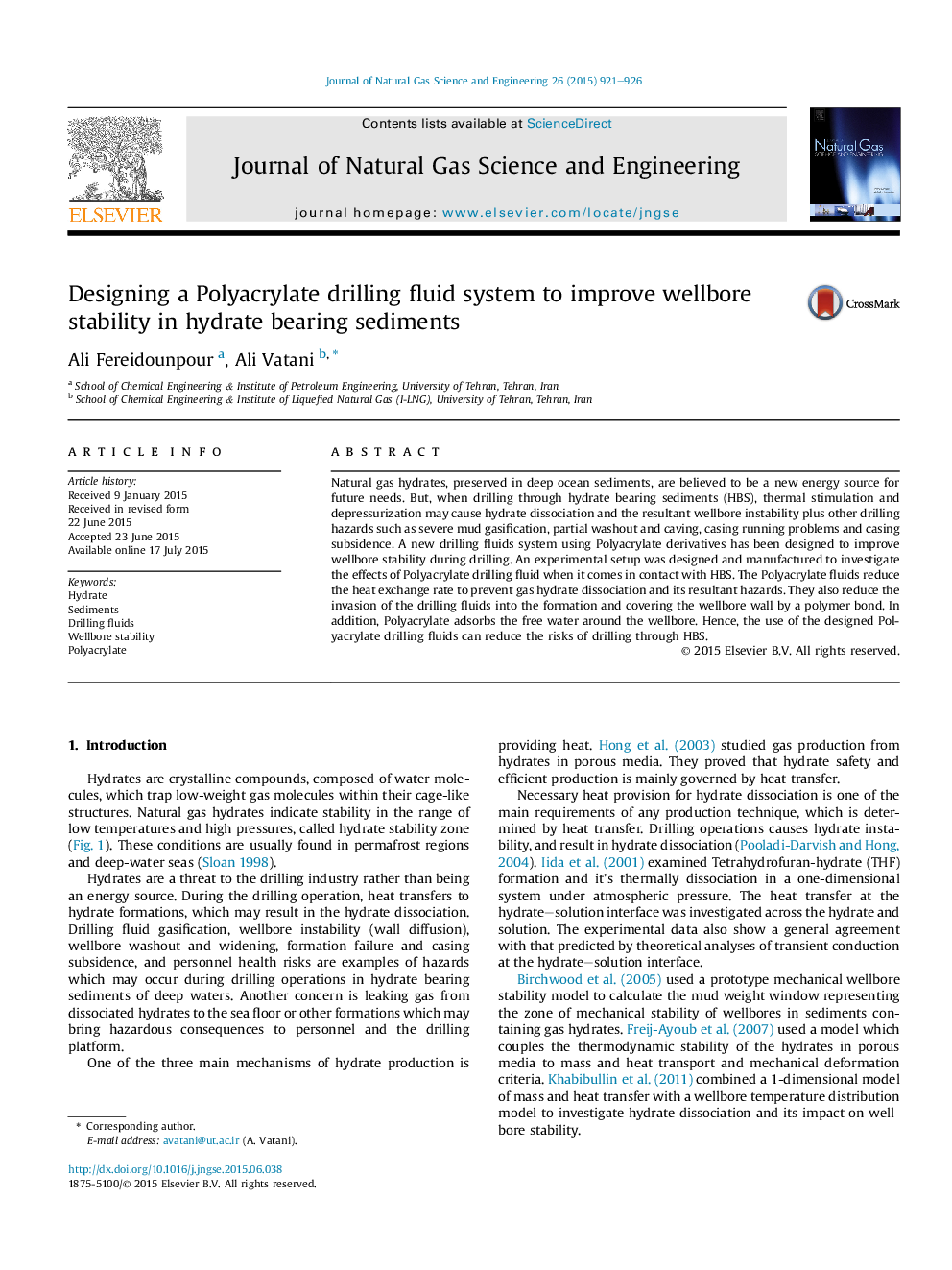| Article ID | Journal | Published Year | Pages | File Type |
|---|---|---|---|---|
| 1757584 | Journal of Natural Gas Science and Engineering | 2015 | 6 Pages |
•The hydrate dissociation rate can be managed via designing the appropriate drilling fluid so that save time while operation.•The designed Polyacrylate drilling fluid shows higher performance in comparison with Advance Polymer mud to inhibit HBS.•Advantages of Polyacrylate are to reduce the invaded filtrate, build a thin and impermeable bond and absorb the free water.•Polyethylene-glycol at low concentration in drilling fluid can be used to prevent hydrate re-formation in surface equipment.
Natural gas hydrates, preserved in deep ocean sediments, are believed to be a new energy source for future needs. But, when drilling through hydrate bearing sediments (HBS), thermal stimulation and depressurization may cause hydrate dissociation and the resultant wellbore instability plus other drilling hazards such as severe mud gasification, partial washout and caving, casing running problems and casing subsidence. A new drilling fluids system using Polyacrylate derivatives has been designed to improve wellbore stability during drilling. An experimental setup was designed and manufactured to investigate the effects of Polyacrylate drilling fluid when it comes in contact with HBS. The Polyacrylate fluids reduce the heat exchange rate to prevent gas hydrate dissociation and its resultant hazards. They also reduce the invasion of the drilling fluids into the formation and covering the wellbore wall by a polymer bond. In addition, Polyacrylate adsorbs the free water around the wellbore. Hence, the use of the designed Polyacrylate drilling fluids can reduce the risks of drilling through HBS.
